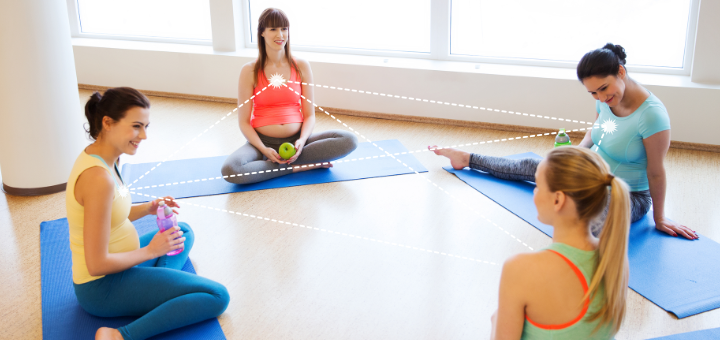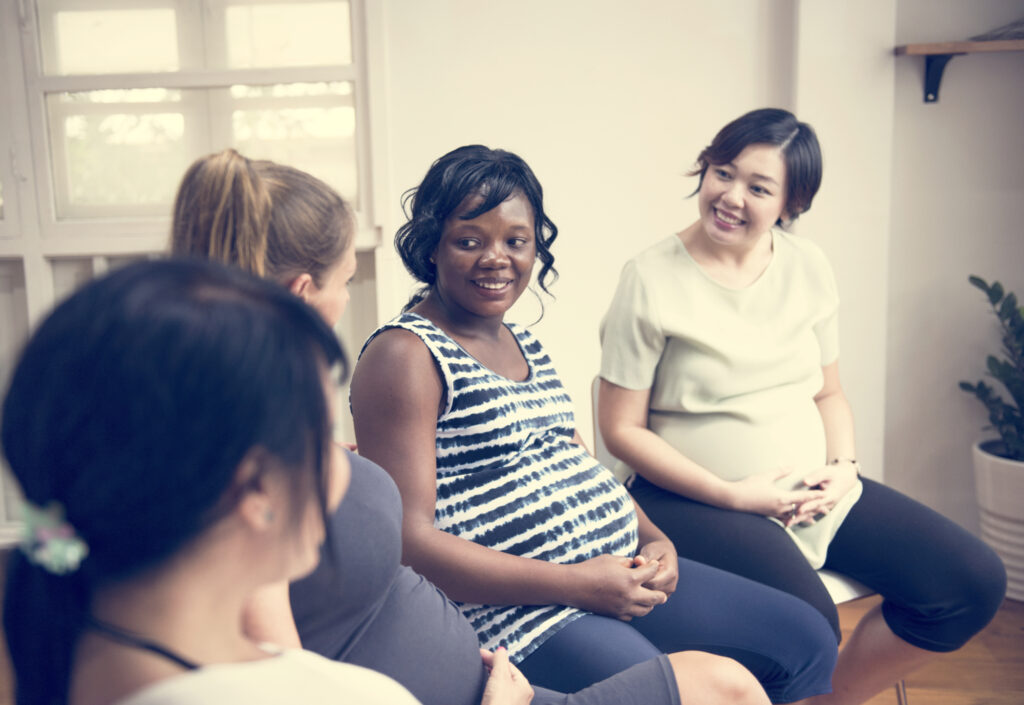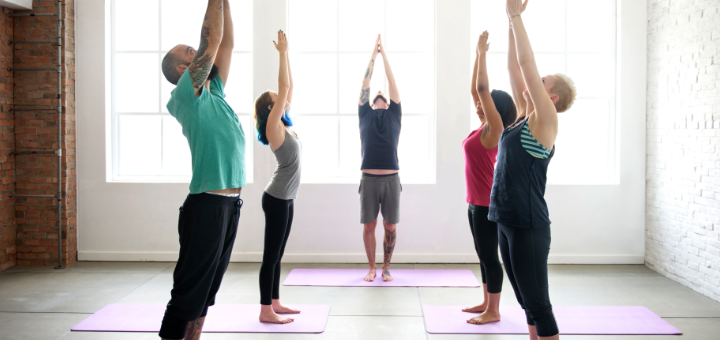What do pregnant women need in a yoga class?

Some years ago, I was invited to teach an introductory workshop on viniyoga at a local health club for women. It was a large group of about 50-60 women, and one of them was visibly pregnant. She positioned herself directly in front of me, so of course, I noticed her right away. As we proceeded with our practice, I kept an eye on her to make sure that she was following along and did not observe any obvious unease with movement. I also made sure that all the poses we did would be appropriate for a pregnant woman and chose not to single her out with my instructions. Later, when I read student’s feedback about the workshop, one of the responses caught my eye – among other things it said: “Not enough variations for pregnant women.” Since there was only one obviously pregnant woman in class, I assumed that it came from her. I will never know if she truly felt some difficulty with the poses that we did or if she simply needed to be acknowledged and/or explicitly encouraged throughout the practice.
The main point that I chose to take from that experience was that it is always important to clearly communicate the following messages to our students – “I see you” and “I am taking your needs into account.” And some populations need it more than others. Those subtle aspects of the practice become really important when we work with pregnant women as a group. When we reflect on the needs of pregnant women, the tendency is to think in terms of poses – which poses would be accessible and needed during which trimester, how we can modify them to make them more accessible, and so on. However, this is just a small part of working with pregnant women.
When a woman is pregnant, her body undergoes a wide range of visible and invisible transformations on every level of the system: physical, physiological, and mental-emotional. Some of those changes are universal, and some are completely unique. For example, the hormone relaxin is released in all women, but some will have more joint instability and sacroiliac joint discomfort than others. Some women will be nauseous, and others won’t be; some will have low energy, and others will be very energetic. Some will have an easier time with pregnancy in general, and others will feel lost. But what I find unites most pregnant women is their desire to share their experiences and feel validated in doing so. This is why it’s very important to focus on building a sense of community in your pregnancy yoga classes and create opportunities for your students to share with one another.

You might choose to make that sense of communal support the cornerstone of your work with your pregnant students. Then, instead of building your practice from the external (specific poses), you would build it from the internal (sense of connection and support), focusing on specific themes like dealing with fears that show up, establishing a base of support for what’s to come, practicing patience, and so on. It’s fairly easy to create a list of those potential intentions by just asking your students in the first session – what are you worried about? – and then gradually giving them tools to address those worries. Another huge part of pregnancy yoga is to help your student maintain the connection to who she is while her physical body, her physiology, and her mental state continue to change. If the only thing you teach your student during your pregnancy yoga is how to use her breath to feel grounded and connected to herself and her experience, it will be a job well done.
My fellow viniyoga teacher Tammy Bosler wrote a wonderful guest blog post about pregnancy yoga on this site titled Rebirth of Asana – the real work of yoga during pregnancy. Tammy writes: “When you are pregnant, not only are you processing your own thoughts on what it means, you are often asked to also listen to everyone else’s opinions on what it means. I have found that once your uterus is occupied, everyone has an opinion about it. Pregnant women hear from everyone, often with the best intentions, about what they should do or feel. In the space of a yoga class, it is important to give them a break from that kind of judgment, no matter how well-intentioned.”
For pose ideas you can check out books like “Yoga for Pregnancy, birth and beyond” by Francoise Barbara Freedman. I often use it to get inspiration for actual asanas that support and help manifest those more esoteric intentions at different stages of pregnancy.
To summarize, there are two main approaches to setting intentions for specific groups of students: from external to internal (from demands of the activity to the needs of students) and from internal to external (from deep mental-emotional needs to their external manifestations through movement and breathing). It’s up to you to decide which approach is more appropriate for your group of students. Just don’t forget that in addition to physical, all of them also have physiological, mental-emotional, and spiritual needs.

When we teach ‘Prenatal Yoga,’ it is, of course, important to study and understand the anatomy and physiology of the process of pregnancy and birth, but it is vital to teach to the woman as she is in her totality.









